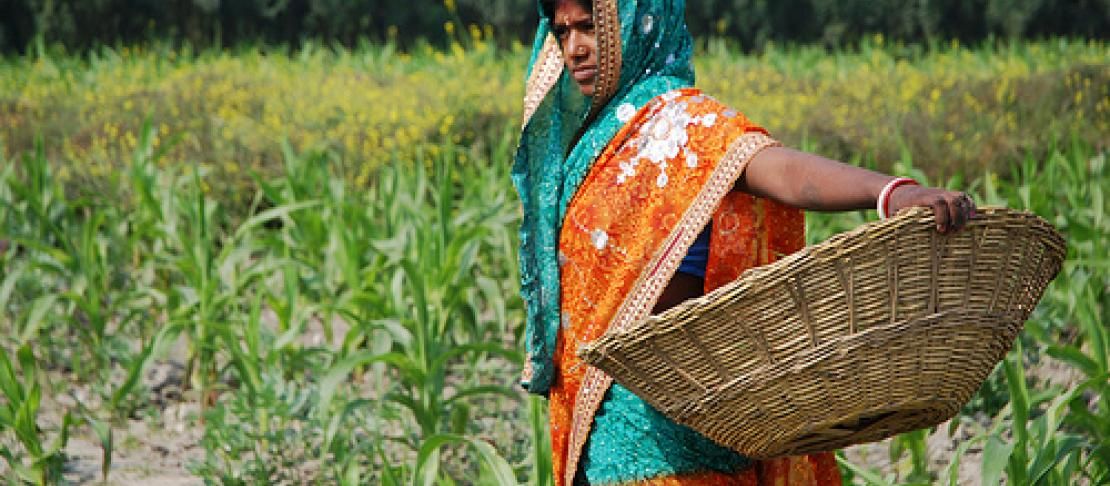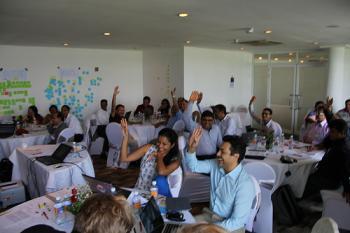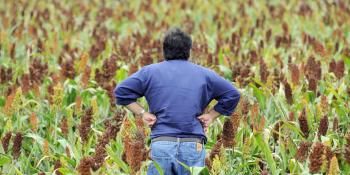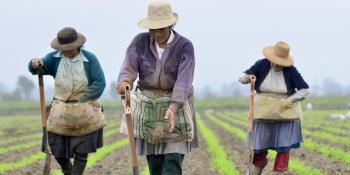Future drivers for regional food security and climate adaptation explored by South Asians

In South Asia, the impacts of future climate change on the livelihoods of the rural poor, on regional food security and on environmental change are very uncertain and depend on the development of future technologies, economies, institutions and communities. What actions could be taken to tackle climate change through cooperation among South Asian nations that might not have been possible in the past?
The CGIAR Research Program on Climate Change, Agriculture and Food Security (CCAFS) is facilitating a process to explore how key socio-economic uncertainties relate to the uncertainty of future climate change. An international workshop was organized in late November in Colombo, Sri Lanka, wherein regional facilitators from governments, private sector, academia, media and civil society related to food systems and environments met to explore key uncertainties for future food security, environments and livelihoods in South Asia up to 2050.

Participants came from Pakistan, India, Sri Lanka, Bangladesh and Nepal to join the workshop and collaborated intensively. The participants went through an extensive process of combining various future states of important drivers.
Could they imagine a future where a high availability of technologies goes together with a dominant agricultural sector in the region? Can an aware, informed and educated population be combined with high urbanisation? These future drivers of change can be combined to generate various socio-economic scenarios, or plausible, alternate ways the future might develop to cope with different climate variability.
For instance, what happens when South Asia becomes highly developed in terms of technologies and economies as a region but the most extreme climate scenario turns out to be the reality? Conversely, what if South Asia is plagued by political tension and low institutional capacity but a moderate climate scenario plays out?
The high-spirited and highly engaged group of participants then proceeded to develop each of these scenarios, exploring how different events and changes would lead to the end state of their scenario in 2050.
Each of these combined scenarios offers very different challenges to decision-makers and researchers.Which policies and technologies would work under all combinations of climate and socio-economic scenarios and are therefore “no regrets” choices? Which would be suitable only in specific conditions? The combination of future states in the workshop generated, from thousands of possible socio-economic scenarios, five scenarios were thought to be diverse enough to offer various different challenges to decision-makers and researchers.
For instance, to create a plausible pathway toward a future South Asia that is politically harmonious, has ubiquitous technologies and has high institutional capacity across the region, certain changes would need to be triggered. Conversely, if participants would imagine a scenario where education, institutional capacity, available technologies and economic development are low, what disruptions or limitations would prevent an adaptive regional response to socio-economic and climate change?
Key terms that characterized different scenarios developed in the workshop were “people power”, “jugad” (a Hindi term roughly translated as “doing whatever works in difficult conditions”) and “the new USA (Union of South Asia)”.
These scenarios are the beginning of a longer process – next steps involve the quantification of the scenarios through two agricultural economic models, IMPACT and GLOBIOM where the socio-economic scenarios will be combined with quantitative climate scenarios.
Once these quantified combinations have been made, the scenarios will be used by decision-makers in governments, the private sector and civil society for strategic interactions to develop adaptive policies, agenda setting and investment planning – and by researchers to test the viability of various technologies and interventions. The scenarios will also be disseminated through various analogue and digital media to engage and interact with larger audiences around these future challenges.
Read more about our Scenarios work here.
Additional stories from our Scenarios research can be found on our blog.
Visit our regional pages for more information about what we are doing in South Asia.
Joost Vervoort is Scenarios Officer working with Oxford University for CCAFS. Gopal Datt Bhatta is Science Officer working at the South Asia regional program office.



